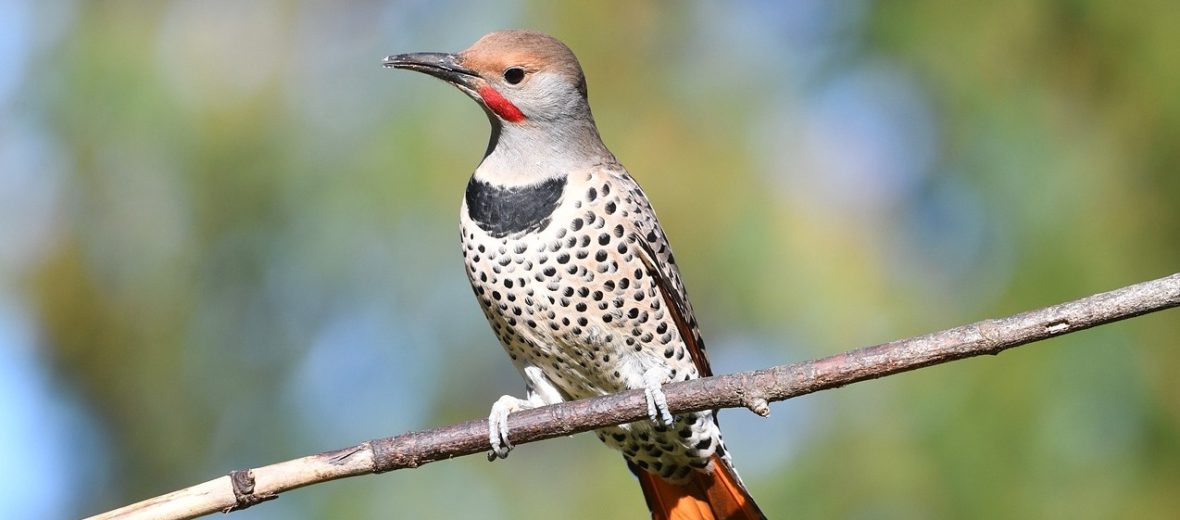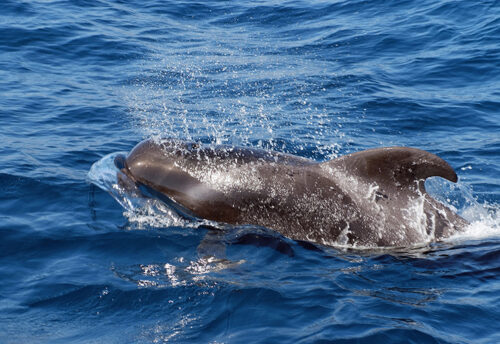
The northern flicker, aka common flicker, boreal flicker, Cuban flicker, gilded flicker, yellowhammer, yellow-shafted flicker, gilded woodpecker, golden-winged woodpecker, and many more, can be found from Alaska, down through Canada, United States, Cayman Islands, Cuba, Saint Pierre, Miquelon, and Mexico. These birds have a large population but are decreasing in numbers due, in part, to habitat loss. They are listed as Least Concern by the IUCN.
First the Stats…
Scientific name: Colaptes auratus
Weight: Up to 4.2 ounces
Length: Up to 14 inches
Wingspan: Up to 21 inches
Lifespan: Up to 9 years
Now on to the Facts!
1.) A group of flickers is called a drumming or descent.
2.) They prefer open habitats close to trees, woodlands, groves, clearings, forest edges, burnt areas, agricultural lands, parks, yards, wet areas like stream-side woodlands, flooded swamps, mangrove vegetation, and the edges of marshes.
3.) Northern flickers are diurnal (active during the day).
4.) Foraging usually takes place on the ground, alone, in pairs, or in small descents.
5.) These birds will sometimes coexist with sparrows and blackbirds.
But wait, there’s more on the northern flicker!
6.) They communicate via a loud, long “ki ki ki ki.” They also drum on metal objects and trees to denote territory.
7.) Being omnivores (eat plant and animal matter), these critters feast on ants, butterflies, moths, flies, beetles, and snails. Flickers also dine on berries, seeds, nuts, poison oak & poison ivy, wild cherry, grape, dogwood, sumac, bayberries, hackberries, elderberries, sunflower seeds, and thistle seeds.
Did you know…?
A testament to why we use scientific names to describe animals, there are around 100 common names for the northern flicker!
8.) Northern flickers are monogamous (mate for life).
9.) Females produce 2 brood per season. Each brood consists of up to 8 eggs.
10.) The northern flicker is a cavity nester that nests in trees and also bird houses. However, they prefer to excavate their own hollow.
But wait, there’s still more on the northern flicker!
11.) Both parents incubate their eggs that hatch in up to 12 days.
12.) Chicks fledge in up to 28 days, but stick with their parents a while longer to learn more foraging tactics.
Did you know…?
In what is termed as anting, these birds will rub ants over their feathers. The formic acid from the ants is thought to assist is keeping pests away and ants are often used in the preening process.
13.) Raccoons, squirrels, snakes, and birds of prey all hunt either the eggs, chicks, or adults.
14.) It is believed that these birds have the longest tongue to body ratio of any North American bird.
15.) There are approximately 16,000,000 wild individuals, to date.
Now a Short Northern Flicker Video!
Be sure to share & comment below! Also, check out the Critter Science YouTube channel. Videos added regularly!
Want to suggest a critter for me to write about? Let me know here.



